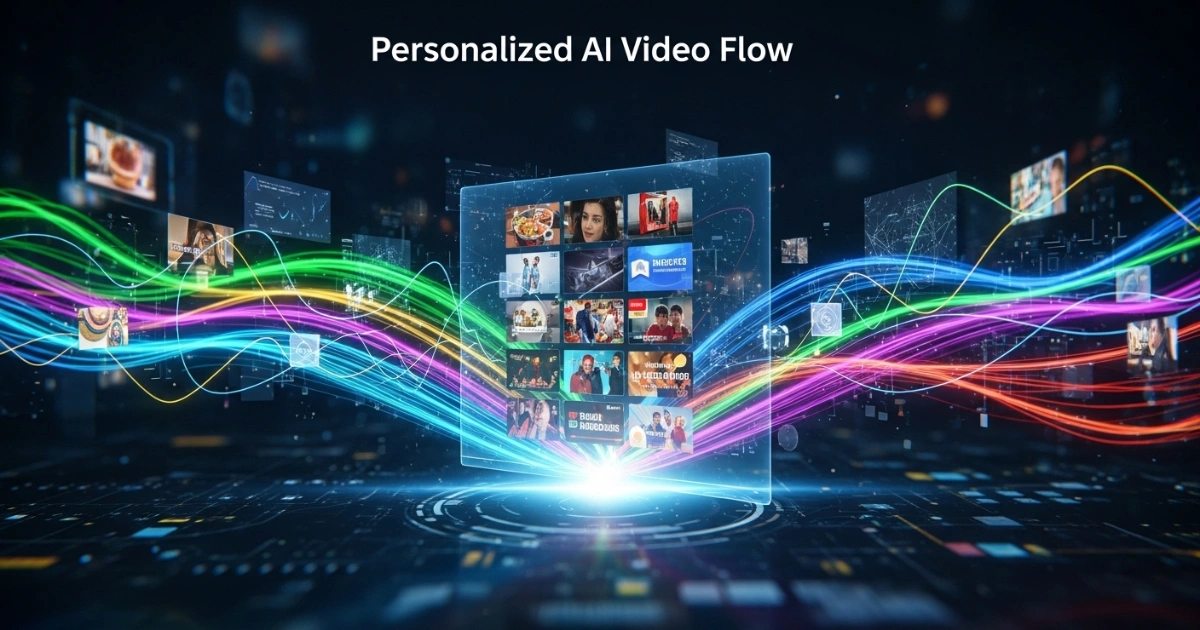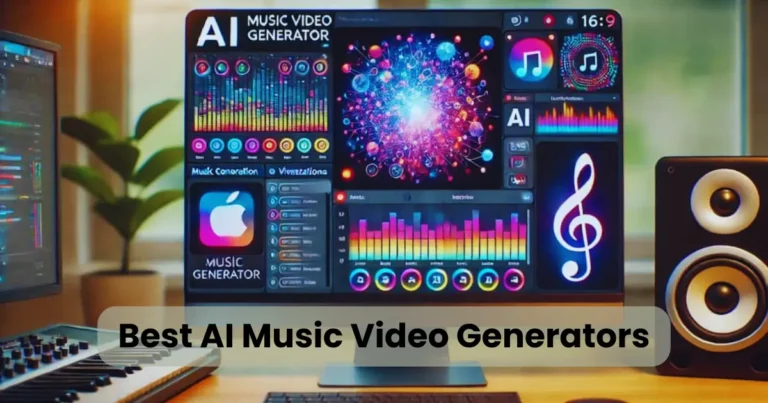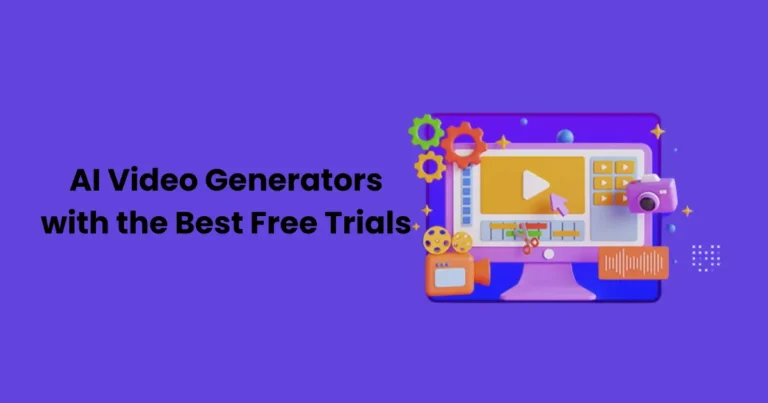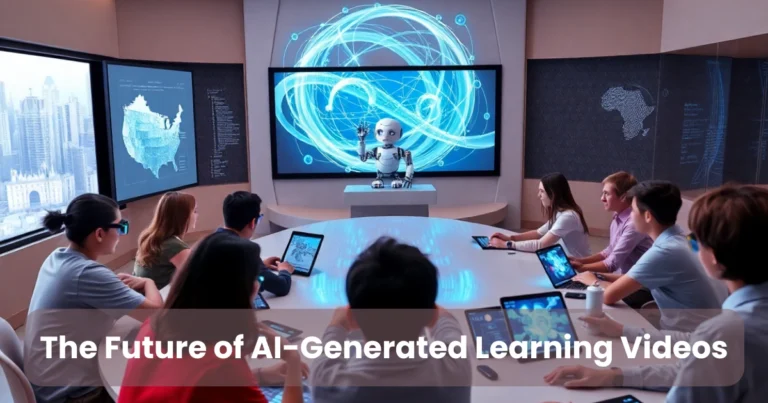Personalized AI Video Flow: Create Engaging Videos Fast

Contents
- 1 What Is Personalized AI Video Flow?
- 2 Why Personalized AI Video Flow Matters
- 3 Key Components of Personalized AI Video Flow
- 4 Top Tools for Personalized AI Video Flow
- 5 How to Implement Personalized AI Video Flow
- 6 Benefits of Personalized AI Video Flow for Businesses
- 7 Challenges and Solutions
- 8 Future Trends in Personalized AI Video Flow
- 9 Practical Applications Across Industries
- 10 Tips for Maximizing Personalized AI Video Flow
The world of content creation is evolving rapidly, and personalized AI video flow is at the forefront of this transformation. By leveraging artificial intelligence, creators can craft videos tailored to individual preferences, streamlining workflows and boosting engagement. This innovative approach combines AI-driven personalization with seamless video production, enabling businesses, marketers, and creators to deliver high-quality content at scale. In this article, we’ll explore the concept of personalized AI video flow, its benefits, tools, and practical applications, while highlighting strategies to maximize efficiency and impact. Whether you’re a content creator or a business owner, understanding this technology can help you stay ahead in the digital landscape.
What Is Personalized AI Video Flow?
Personalized AI video flow refers to the process of using artificial intelligence to create customized video content tailored to specific audiences. Unlike traditional video production, which often requires extensive manual effort, AI video flow automates tasks like scripting, editing, and personalization. By analyzing user data—such as preferences, behavior, and demographics—AI tools generate videos that resonate with viewers on a personal level. For instance, a marketing campaign might use AI to produce unique video ads for different customer segments, ensuring relevance and engagement.
Moreover, this process streamlines the entire video creation pipeline. From generating scripts to selecting visuals and adding voiceovers, AI optimizes each step to save time and resources. As a result, creators can produce professional-grade videos faster, making it ideal for businesses with tight schedules or limited budgets. The keyword here is efficiency: personalized AI video flow empowers creators to work smarter, not harder.
Why Personalized AI Video Flow Matters

Enhancing Audience Engagement
Firstly, personalized AI video flow significantly boosts audience engagement. By tailoring content to individual preferences, videos feel more relevant and compelling. For example, an e-commerce brand can create product recommendation videos based on a customer’s browsing history, increasing the likelihood of a purchase. Studies show that personalized content can improve engagement rates by up to 30%, making this approach a game-changer for marketers.
Saving Time and Resources
Additionally, AI-driven workflows save creators valuable time. Manual video production can take days or even weeks, but AI tools can generate polished videos in hours or minutes. This efficiency allows businesses to scale their content production without sacrificing quality. Consequently, teams can focus on strategy and creativity rather than repetitive tasks.
Cost-Effective Content Creation
Furthermore, personalized AI video flow reduces production costs. Traditional video production often involves hiring editors, voice actors, and graphic designers. In contrast, AI platforms handle these tasks automatically, cutting expenses significantly. Small businesses and startups, in particular, benefit from this cost-effective approach, as it levels the playing field against larger competitors.
Scalability for Businesses
Finally, scalability is a key advantage. Whether you’re creating one video or thousands, AI can adapt to your needs. For instance, a global brand can produce localized video ads for different regions, each tailored to cultural nuances and languages. This scalability ensures consistent messaging while maintaining personalization.
Key Components of Personalized AI Video Flow
To understand how personalized AI video flow works, let’s break down its core components:

1. Data Analysis and Audience Segmentation
The foundation of personalization lies in data. AI tools analyze user data—such as demographics, interests, and online behavior—to segment audiences effectively. For example, a fitness brand might segment its audience into beginners, intermediates, and advanced users, creating tailored workout videos for each group. This step ensures that videos align with viewers’ needs and preferences.
2. Automated Script Generation
Next, AI generates scripts based on the target audience and campaign goals. Natural language processing (NLP) algorithms create compelling narratives that resonate with viewers. For instance, an AI tool might craft a script for a promotional video that highlights specific product benefits based on user data. This automation saves time and ensures consistency.
3. Visual and Audio Customization
After scripting, AI selects or generates visuals, animations, and voiceovers to match the content. Tools like text-to-video platforms can create dynamic visuals from scratch, while AI voice generators produce natural-sounding narration in multiple languages. This customization enhances the video’s appeal and accessibility.
4. Seamless Editing and Rendering
Finally, AI streamlines the editing process. From cutting clips to adding transitions and effects, AI tools handle complex tasks with precision. Some platforms even optimize videos for different platforms, such as Instagram’s vertical format or YouTube’s widescreen layout. As a result, creators can produce polished videos with minimal effort.
Top Tools for Personalized AI Video Flow
Several AI-powered tools are leading the charge in personalized video creation. Here are some of the best options available in 2025:

1. Synthesia
Synthesia is a popular platform for creating AI-generated videos with lifelike avatars. It allows users to input scripts and generate videos in multiple languages, making it ideal for global campaigns. Additionally, Synthesia supports personalization by integrating user data to create tailored content.
2. Runway
Runway offers advanced AI tools for video editing and generation. Its text-to-video feature lets users create videos from simple prompts, while its editing suite automates tasks like background removal and color correction. Runway’s versatility makes it a favorite among creators.
3. Descript
Descript combines AI-driven transcription with video editing, allowing users to edit videos by editing text. Its Overdub feature creates realistic voiceovers, while its personalization capabilities let users tailor content for specific audiences. Descript is perfect for podcasters and video creators alike.
4. Pictory
Pictory transforms text content—such as blog posts or scripts—into engaging videos. It automatically selects visuals, adds music, and generates voiceovers, streamlining the video creation process. Pictory’s AI also supports personalization, ensuring videos align with audience preferences.
5. Lumen5
Lumen5 is designed for marketers, turning blog posts or social media content into videos. Its AI analyzes text to select relevant visuals and suggests layouts, making it easy to create professional videos quickly. Lumen5 also supports audience segmentation for personalized campaigns.
How to Implement Personalized AI Video Flow
To maximize the benefits of personalized AI video flow, follow these steps:

Step 1: Define Your Goals
Start by identifying your objectives. Are you aiming to increase brand awareness, drive sales, or educate your audience? Clear goals will guide your AI tool selection and content strategy. For example, a sales-driven campaign might focus on personalized product demos, while an educational campaign could prioritize tutorials.
Step 2: Collect and Analyze Data
Next, gather data on your target audience. Use analytics tools to track user behavior, preferences, and demographics. AI platforms often integrate with CRM systems or social media analytics, making it easy to import data for personalization. The more data you have, the more tailored your videos will be.
Step 3: Choose the Right AI Tool
Select a tool that aligns with your needs and budget. For instance, if you need multilingual videos, Synthesia or Descript might be ideal. If you’re focused on repurposing blog content, Pictory or Lumen5 could be better suited. Test different platforms to find the best fit.
Step 4: Create and Customize Content
Use your chosen AI tool to generate scripts, visuals, and audio. Customize content based on audience segments, ensuring each video feels personal and relevant. For example, a travel agency might create separate videos for families, solo travelers, and adventure seekers.
Step 5: Optimize for Platforms
Ensure your videos are optimized for the platforms where they’ll be shared. AI tools can adjust aspect ratios, add captions, or optimize file sizes for faster loading. For instance, TikTok videos should be short and vertical, while YouTube videos can be longer and widescreen.
Step 6: Measure and Refine
Finally2, track the performance of your videos using analytics tools. Monitor metrics like engagement, click-through rates, and conversions to gauge success. Use these insights to refine your personalized AI video flow, tweaking scripts or visuals to improve results.
Benefits of Personalized AI Video Flow for Businesses

Improved Customer Retention
Personalized videos foster stronger connections with audiences, increasing customer loyalty. For example, a subscription service might send personalized onboarding videos to new users, guiding them through the platform. This personal touch can reduce churn rates and boost retention.
Higher Conversion Rates
Moreover, tailored videos drive conversions. By addressing specific pain points or interests, personalized content encourages viewers to take action. For instance, an AI-generated video showcasing a product’s benefits for a specific demographic can lead to higher sales.
Competitive Advantage
Businesses that adopt personalized AI video flow gain a competitive edge. As consumers increasingly expect tailored experiences, companies that deliver personalized content stand out. This approach also allows businesses to adapt quickly to market trends and customer needs.
Enhanced Brand Storytelling
Finally, AI video flow enhances brand storytelling. By creating videos that resonate emotionally with audiences, businesses can build stronger brand identities. For example, a nonprofit might use AI to create heartfelt donor thank-you videos, strengthening relationships with supporters.
Challenges and Solutions
While personalized AI video flow offers numerous benefits, it’s not without challenges. Here are some common obstacles and how to overcome them:
Challenge 1: Data Privacy Concerns
Personalization relies on user data, which raises privacy concerns. To address this, ensure compliance with regulations like GDPR or CCPA. Use secure AI platforms that prioritize data protection and obtain user consent before collecting data.
Challenge 2: Learning Curve
Some AI tools have a steep learning curve, especially for beginners. To overcome this, choose user-friendly platforms with tutorials or customer support. Additionally, invest time in training your team to use these tools effectively.
Challenge 3: Maintaining Authenticity
Over-automation can make videos feel robotic or impersonal. To maintain authenticity, blend AI-generated content with human creativity. For instance, review AI-generated scripts to ensure they align with your brand’s voice and values.
Challenge 4: Cost of Advanced Tools
While AI reduces overall production costs, some advanced tools require subscriptions. To manage costs, start with free or affordable platforms like Lumen5 or Pictory. As your needs grow, consider investing in premium tools for advanced features.
Future Trends in Personalized AI Video Flow
The future of personalized AI video flow is bright, with several exciting trends on the horizon:

1. Real-Time Personalization
AI is advancing toward real-time video personalization, where content adapts instantly based on user interactions. For example, a streaming platform could generate personalized movie trailers as users browse.
2. Hyper-Realistic Avatars
Advancements in AI are creating hyper-realistic avatars that mimic human expressions and voices. These avatars will make personalized videos even more engaging and lifelike.
3. Integration with AR/VR
As augmented reality (AR) and virtual reality (VR) gain traction, AI video flow will integrate with these technologies to create immersive experiences. For instance, retailers could use AI to generate personalized AR product demos.
4. Voice-Activated Video Creation
Voice-activated AI tools will simplify video creation further. Creators could describe their vision, and AI would generate a complete video, from script to visuals, based on voice commands.
Practical Applications Across Industries
Personalized AI video flow has applications across various sectors:

E-Commerce
Online retailers use AI to create personalized product videos, showcasing items based on customer preferences. For example, a fashion brand might generate videos highlighting outfits tailored to a user’s style.
Education
In education, AI video flow creates customized learning content. Teachers can produce personalized tutorials for students, addressing their unique learning needs and paces.
Healthcare
Healthcare providers use AI to create patient education videos, explaining treatments or procedures in a tailored way. This improves patient understanding and engagement.
Marketing
Marketers leverage AI to produce targeted video ads, increasing ROI. For instance, a travel agency might create personalized destination videos based on a customer’s travel history.
Entertainment
Streaming platforms use AI to generate personalized trailers or recommendations, enhancing user experiences and keeping viewers engaged.
Tips for Maximizing Personalized AI Video Flow
To make the most of this technology, consider these tips:
- Focus on Quality Data: High-quality data leads to better personalization. Ensure your data is accurate and up-to-date.
- Test and Iterate: Experiment with different AI tools and video formats to find what works best for your audience.
- Balance Automation and Creativity: Use AI for efficiency but add human touches to maintain authenticity.
- Optimize for Mobile: Since most viewers watch videos on mobile devices, ensure your videos are mobile-friendly.
- Stay Updated on Trends: AI technology evolves quickly, so keep an eye on new tools and features to stay competitive.
Conclusion
Personalized AI video flow is transforming the way we create and consume video content. By automating and customizing the production process, AI empowers creators to deliver engaging, relevant videos at scale. From enhancing audience engagement to reducing costs, the benefits are undeniable. As AI technology continues to advance, the possibilities for personalized video content will only grow. By adopting the right tools and strategies, businesses and creators can harness the power of personalized AI video flow to stay ahead in the digital age. Start exploring this technology today, and unlock new opportunities for creativity and connection.






